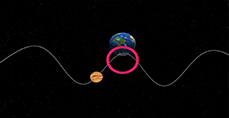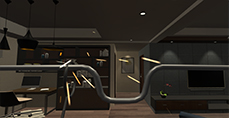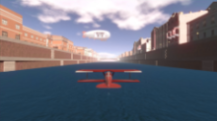Neuro


Patients' brain plasticity is stimulated thanks to the immersive environment provided by virtual reality.
Even in patients suffering from chronic conditions, years after a stroke or many other neurological conditions, it is possible to regain functional abilities, in a sustainable way, notably with the first immersive Virtual Reality Mirror Therapy.
Many neurological pathologies can be managed in VR (Virtual Reality):
- Parkinson's, Alzheimer's, MS, Ataxia ...
- Hemiplegia from a stroke, CPT, a fall...
- Hemineglect
- Para/tetraplegia
- Rehabilitation for ADLs ...
For example:
Patients with spinal injuries will be able to benefit from active limb or spine rehabilitation environments that can be fully configured according to their movement or grasping abilities. In a playful environment, the patient will focus on a task to be performed (for example, exercises : [Whack a mush], [SpineVR], [ Air RaceVR], [Archery]...) and the practitioner will modulate in real time the virtual environment either to increase the difficulty or on the contrary to decrease it in case of fatigue of the patient. Thus the patient will always be in a situation of personalized motor acquisition conducive to stimulating neurological recovery.
What about balance disorder?
Virtual reality gives the practitioner a tool to measure the patient's sensory interactions in his balancing reactions. The physiotherapist can rely on exercise, [Optical Flow], or other environments with visual scrolling or environments controlled by the patient's vision. He will be able to propose relevant rehabilitation exercises according to the sensory deficits of the patient, which will save time and efficiency in the management of these disorders that can affect all neurological disorders.
and hemineglect?
Using simple measurement software (such as [HemiNeglect]), the practitioner can quantify horizontal deviations in the visual field. He can also assess the subjective verticality of the patient (with the modules: [VVS], [VVS Dynamic]). Rehabilitation software such as [Target Tracking ] and [Head-Eye Coordination] stimulate the patient in the direction of his hemineglect with eye tracking or gesture orientation tools. The patient is transposed into realistic worlds where he or she can, for example, be put in the situation of having to cross a street looking in both directions to make sure the way is clear (exercise [CrowdVR]). Being able to do this in all weathers in a safe and secure environment brings real comfort and simplifies rehabilitation.
And concretely, How's it going?
Let's take the case of a patient who was 58 years old at the time of his treatment, with Congenital Right Hemiplegia with abnormal movement of the Dyskinesia type and a treated Partial Epilepsy.

Each session lasted 30 minutes and included active rehabilitation of the healthy limb with mirror movement on the injured side with the exercise of [Mirror Therapy] in virtual reality. First without, then with the physiotherapist accompanying the movement of the affected limb, the patient performed flexion and extension movements of the fingers and wrists as well as pronation and supination movements.
Discover in the video opposite this patient before and after rehabilitation in virtual reality of this patient treated by Dr PY. Libois, Neurologist in Belgium
Some of the exercises mentioned:















